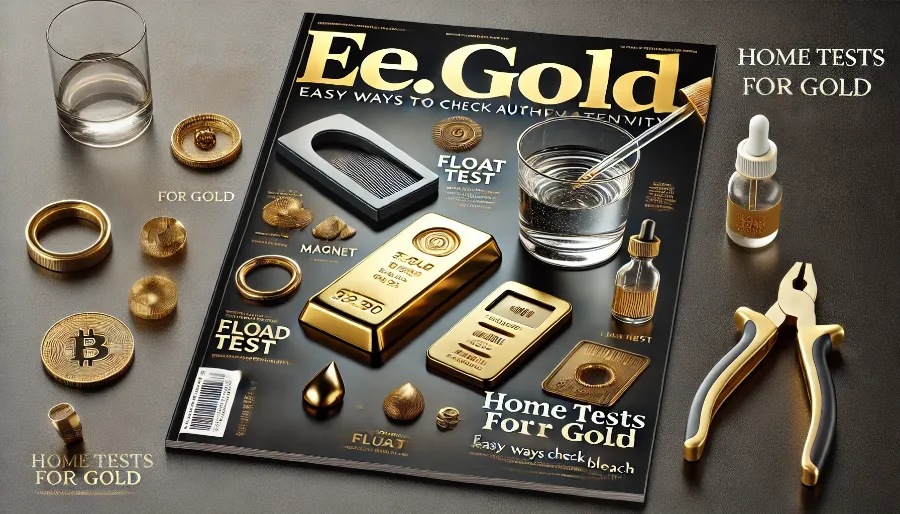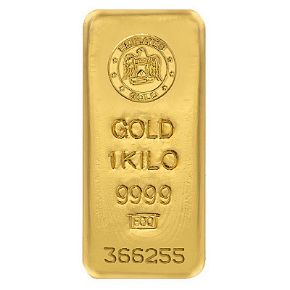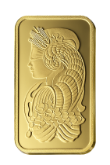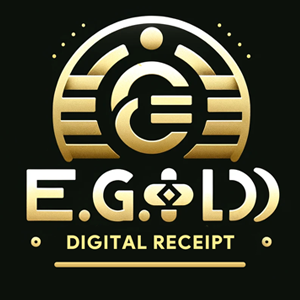
Gold is one of the most sought-after and valuable metals, symbolizing wealth and stability for centuries. However, with counterfeit gold becoming more prevalent, it’s essential to know how to verify its authenticity. While professional testing is the most reliable method, you can perform several simple home tests to determine if your gold is real. In this guide, we’ll explore the top home tests for gold, how they work, and their benefits and limitations.
Why Test Gold at Home?
Testing gold at home is convenient, cost-effective, and can help you quickly identify fake or counterfeit items. Whether you’ve inherited jewelry, purchased second-hand gold, or want to verify the authenticity of your investment, home tests offer an accessible way to gain peace of mind.
Top Home Tests for Gold
Here are the most reliable and easy-to-perform methods to test gold at home:
1. The Magnet Test
- How It Works: Gold is not magnetic, so if your item is attracted to a magnet, it’s likely fake or contains other magnetic metals.
- What You Need: A strong magnet.
- Steps:
- Hold the magnet close to your gold item.
- Observe if there’s any attraction.
- Results: If the gold is attracted to the magnet, it’s likely not real gold. Pure gold will not react.
2. The Float Test
- How It Works: Gold is dense and will sink in water, while fake gold may float or settle slowly.
- What You Need: A glass of water.
- Steps:
- Fill a glass with water.
- Drop your gold item into the glass.
- Results: Real gold will sink immediately to the bottom, while fake or gold-plated items may float.
3. The Vinegar Test
- How It Works: Vinegar’s acidity can reveal whether gold is genuine, as real gold does not react to vinegar.
- What You Need: White vinegar and a small container.
- Steps:
- Place the gold item in a container.
- Pour enough vinegar to fully submerge the item.
- Let it sit for 15–20 minutes.
- Results: If the gold remains unchanged, it’s likely real. If it discolors or reacts, it’s likely fake.
4. The Ceramic Scratch Test
- How It Works: Real gold leaves a gold streak, while fake gold leaves a black or green streak.
- What You Need: An unglazed ceramic tile or plate.
- Steps:
- Rub the gold item on the ceramic surface.
- Observe the streak it leaves behind.
- Results: A gold streak indicates real gold, while a black or green streak suggests fake gold.
5. The Bleach Test
- How It Works: Bleach can oxidize metals that aren’t gold, revealing their true nature.
- What You Need: Household bleach and a small container.
- Steps:
- Apply a small amount of bleach to an inconspicuous area of the gold item.
- Observe any reaction.
- Results: Real gold will not react, while fake gold may discolor or tarnish.
6. The Density Test
- How It Works: Gold has a specific density (19.3 g/cm³), and measuring the item’s weight and volume can verify its authenticity.
- What You Need: A scale, a measuring container, and water.
- Steps:
- Weigh your gold item.
- Fill a container with water and record the initial volume.
- Submerge the gold item and measure the displaced water.
- Divide the weight by the displaced volume to calculate density.
- Results: If the result is close to 19.3 g/cm³, the item is likely real gold.
What to Do If Your Gold Fails a Test
If your gold item doesn’t pass a home test, it doesn’t necessarily mean it’s fake. Gold-plated or alloyed items can sometimes behave differently than pure gold. For high-value or sentimental items, consider taking them to a professional jeweler or refinery for more accurate testing.
When to Seek Professional Testing
Home tests are a great starting point, but professional testing is recommended for:
- High-Value Items: If your gold is worth a significant amount, professional verification is essential.
- Selling Gold: Many buyers require an official purity assessment before purchasing.
- Gold Bars or Coins: Investment-grade gold often needs certification for resale.
Professional methods, such as X-ray fluorescence (XRF), acid testing, or fire assays, provide precise results that home tests cannot match.
Tips for Accurate Home Testing
- Use Multiple Tests: Combine different methods to get a more accurate assessment of your gold’s authenticity.
- Test in Small Areas: For items like jewelry, test in inconspicuous spots to avoid visible damage.
- Clean Your Gold: Dirt or oil can interfere with test results, so ensure your gold is clean before testing.
Risks of Home Testing
While home testing is convenient, it comes with some risks:
- Damage: Tests like the scratch or bleach test can damage gold-plated or delicate items.
- Inaccurate Results: Some fake gold items may pass home tests, especially if they’re well-crafted.
The Future of Home Gold Testing
As technology advances, tools like smartphone apps and portable testing devices are making home gold testing even more accessible and reliable. These innovations allow users to verify gold’s authenticity with greater confidence, combining the convenience of home testing with professional-grade accuracy.
Frequently Asked Questions About Home Gold Testing
1. Can I trust home gold tests?
Home tests are a great starting point but may not be 100% accurate. For valuable items, professional testing is recommended.
2. What’s the easiest home test for gold?
The magnet test and water float test are the simplest and most accessible methods.
3. Can gold-plated items pass home tests?
Some gold-plated items may pass certain tests, but they’ll fail others like the scratch or density test.
4. Is the vinegar test safe for all gold items?
Yes, but avoid using it on items with non-gold components, like gemstones, which may be damaged.
5. What is the most reliable home test?
The density test is the most reliable, as it measures gold’s unique physical properties.
Final Thoughts: Why Test Gold at Home?
Testing gold at home is an empowering way to verify authenticity without relying on professional services. Whether you’re checking inherited jewelry, verifying a purchase, or preparing to sell, these simple methods can save you time and money. While home tests aren’t foolproof, they provide a solid starting point for ensuring your gold is genuine. Combine multiple tests for the most accurate results, and don’t hesitate to seek professional verification for valuable items. Gold has been a symbol of trust and wealth for centuries—make sure yours lives up to its reputation.
NOTE
This Content is the copyrighted content of EE.GOLD. All rights are reserved. You are welcome to share or use our content only by including direct links to our website. Any other form of reproduction, distribution, or use without proper attribution is strictly prohibited.
This Content is intended solely for educational purposes. The information provided does not constitute financial or investment advice.
Please note that Digital Storage Receipt, Secure Storage Solutions, and Physical Gold Sales are the only services offered by EE.GOLD.
We strictly adhere to government regulations and are firmly against all illegal financial or investment activities globally.
For further inquiries, feel free to contact us through our official channels.










.png)

